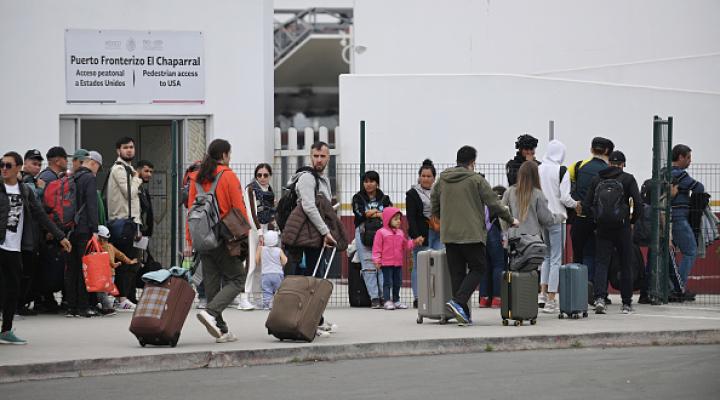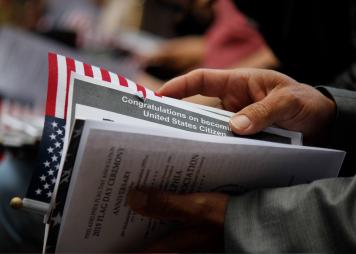Understanding Title 42

One such measure was implemented by the United States federal government. Title 42 is a section of the U.S. Code that grants the Centers for Disease Control and Prevention (CDC) the authority to impose health-related restrictions at the border. While Title 42 was initially enacted as a response to public health emergencies, its implementation has had significant implications, particularly on immigration and the rights of asylum seekers at the southern border.
What is Title 42?
Title 42, also known as the "Public Health and Welfare" provision, allows the CDC to take action to prevent the introduction, transmission, and spread of communicable diseases into the United States. In March 2020, as the COVID-19 pandemic began to escalate, the Trump administration invoked Title 42 to implement a policy of rapid expulsion of migrants and asylum seekers encountered at the U.S.-Mexico border, including families and unaccompanied children.
Under this policy, individuals apprehended at the southern border were immediately expelled without the opportunity to seek asylum or undergo the usual immigration proceedings. This expulsion process, commonly referred to by border patrol as "expedited removal," bypasses standard immigration protocols and deprives individuals of their right to due process. While Title 42 applies to all migrants encountered at the borders, regardless of their immigration status, it disproportionately affected asylum seekers and vulnerable populations.
How was Title 42 Put Into Effect?
The implementation of Title 42 has drawn criticism from human rights organizations, legal experts, and advocates for immigrant rights. Critics argue that the policy violates U.S. obligations under international and domestic law, including the right to seek asylum and the principle of non-refoulement, which prohibits the return of individuals to a country where they may face persecution or harm, like many at the U.S.-Mexico border.
One of the key concerns raised by opponents of Title 42 is the denial of access to the asylum system. Seeking asylum is a fundamental right protected by both U.S. and international law. However, the policy's expedited removal process effectively bypassed this right, leaving individuals with limited options to present their claims for protection. This resulted in a significant backlog of asylum cases.
Moreover, the expulsion of vulnerable individuals, including unaccompanied children, raised concerns about their well-being and safety. Expelling minors without proper screening and due process measures increases the risk of trafficking, exploitation, and abuse. The policy also placed an additional burden on neighboring countries, such as Mexico, as they were forced to deal with the consequences of increased expulsions.
While Title 42 was initially implemented as a temporary measure during the pandemic, it has remained in effect under the Biden administration. Despite calls from advocates and legal experts to rescind the policy, the administration has maintained its use, citing public health concerns and the need to protect the U.S. population from the spread of COVID-19.
What's the status of the legal fights over Title 42?
Over the past few years, the order Title 42 from the CDC to close off the US-Mexico border has been contested in various federal courts, with some courts and federal judges ruling for and against the move. In March 2022, U.S. District Judge Mark Pittman in Fort Worth ruled that it was illegal to exempt unaccompanied children from Title 42 expulsions while another appellate court in Washington D.C. confirmed a lower court ruling against expelling asylum-seeking migrant families to countries where they could be persecuted or tortured.
In response to plans by the Biden administration to let Title 42 expire, Arizona and 21 other states filed a lawsuit on April 3rd asking for a judge to stop this move; Texas filed another similar lawsuit shortly after. Both argued that the current administration violated government administrative procedural laws if Title 42 was lifted as planned, warning of potential chaos at the border should this happen. As of now, there is still no definitive answer regarding whether or not Title 42 will be kept as policy at the US-Mexico border nor what its fate will ultimately be.
Who has been expelled from the country under Title 42?
Under Title 42, an unprecedented number of people have been expelled by border patrol from the United States since April 2020. The vast majority of these expulsions involved single adults, with just 11 percent involving people traveling in families and 1 percent being unaccompanied minors. The origin nations of those who were removed under Title 42 are mainly Mexico (60%), Guatemala (15%), Honduras (14%), El Salvador (5%), and other countries (6%). It is especially concerning given how many travel for protection purposes while facing persecution or risks to their lives.
The implications of these expulsions are serious. Although the former administration has cited public health as the rationale for the use of this policy, it is having a devastating effect on some of the most vulnerable displaced populations due to its lack of focus on individuals’ human rights and circumstances. Furthermore, many women and children fleeing from violence in their home countries are finding themselves stuck at borders where they do not have access to sufficient food, water or shelter, creating a humanitarian hardship that could have easily been avoided with a different approach to this policy.
Consequences of Removing Title 42
Opponents of immigration reform argue that immigrants will flood the U.S. now that Title 42 has been removed. However, the most recent figures show that immigration number have not sky rocketed. With nations around the world in urgent need of people to both populate their countries and fill employment vacancies across industries, immigrants have more options than ever to migrate to new lands.
Besides this, the fear of allowing more immigrants into the U.S. lies in security. It is in the common conversation that immigrants drive crime, but that could not be farther from the truth.
A 2020 study by the Proceedings of the National Academy of Sciences (PNAS), cited by the Department of Justice, showed that undocumented immigrants have "substantially" lower crime rates than native-born citizens and legal immigrants, according to arrest data from the Texas Department of Public Safety. PNAS used the data to compare criminality of undocumented immigrants, legal immigrants and native-born US citizens between 2012 and 2018. The peer-reviewed journal revealed that U.S.-born citizens are over two times more likely to be arrested for violent and drug crimes, and over four times more likely to be arrested for property crimes.
The U.S. is falling behind financially and population-wise by closing its doors or making it harder for immigrants, especially refugees and asylees, to come and settle in this nation without tangible proof of the harm they could cause.
Title 42 has had far-reaching implications for both the United States and immigrants. While the policy's intent was to protect public health, its implementation has raised concerns about the denial of due process, the violation of asylum rights, and the wellbeing of vulnerable populations.
As the situation continues to evolve, it remains crucial to strike a balance between public health considerations and upholding the rights and dignity of individuals. The ultimate resolution lies in comprehensive immigration reform and addressing the underlying causes of migration to ensure a fair and humane approach to border management.



